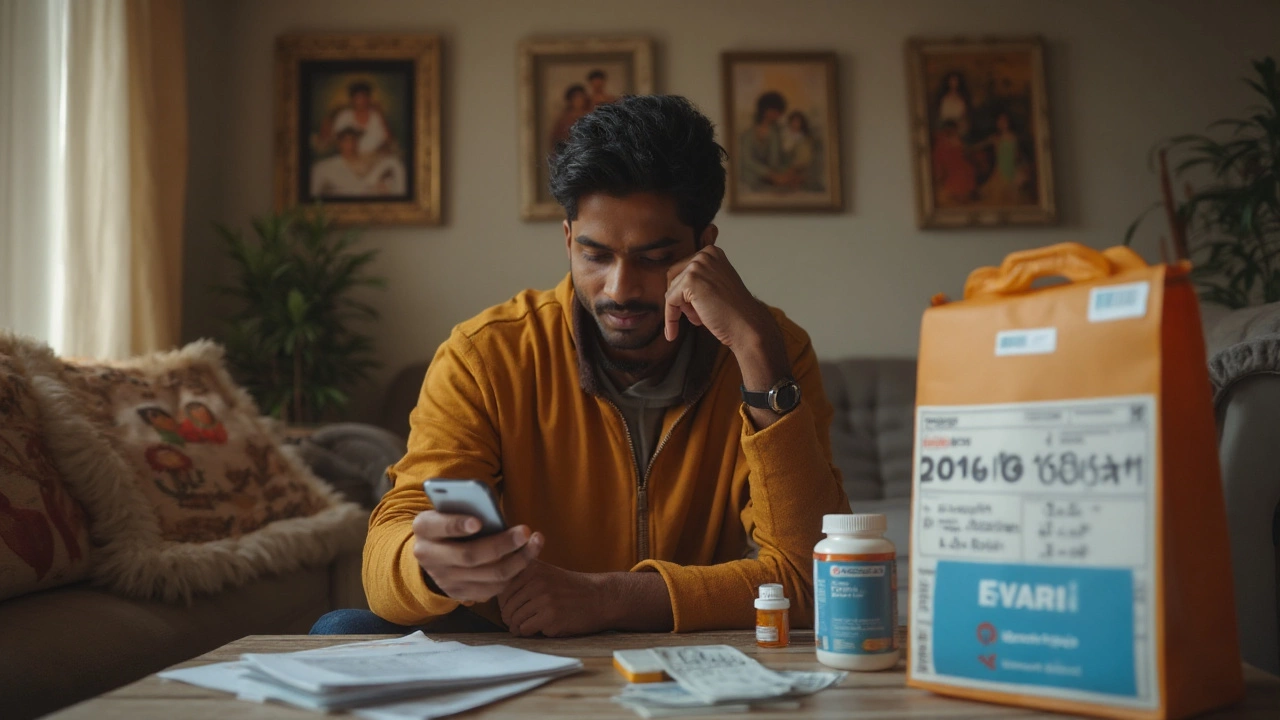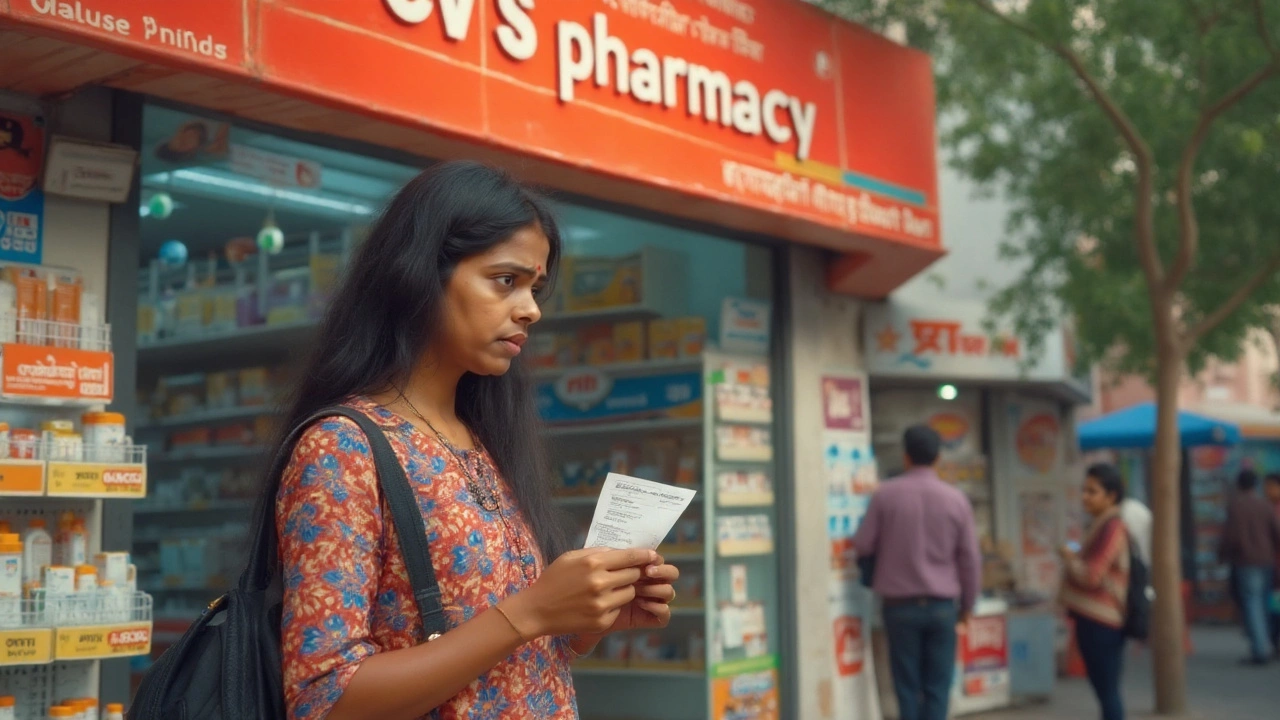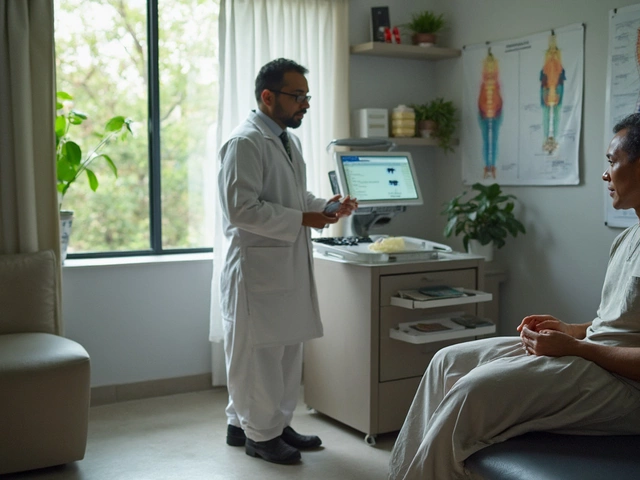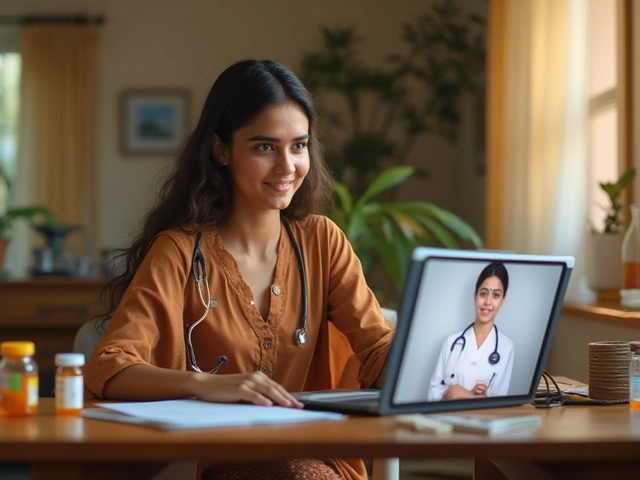Walk into a CVS pharmacy in America, and it’s hard to ignore that sting in your wallet. Even for the basic stuff—painkillers, allergy meds, a tube of toothpaste—the prices can make you wince. Not just tourists; even locals wonder why something as simple as a bottle of ibuprofen is almost twice as expensive as at a big-box store across the street. This isn’t just a fluke. The question is everywhere: why is CVS pharmacy so expensive?
Breaking Down CVS Prices: What's Really Behind the High Costs?
Let’s get one thing straight—CVS isn’t alone. Most chain pharmacies in the US carry price tags that feel pretty steep, especially compared to what you’d pay at Walmart, Costco, or even online. But CVS seems to be at the top of that price mountain. Why? Here’s a peek behind the counters.
First up, location, location, location. CVS usually plants itself right in busy neighborhoods, near schools, hospitals, or train stations. High-rent districts mean hefty overheads, and those costs trickle down to every item on the shelf. Plus, they’re open late—sometimes 24/7. There’s a price for convenience, and CVS makes sure you pay for it.
Next, let’s talk about insurance and pharmacy benefit managers (PBMs). It’s a confusing dance of bills, discounts, and secret negotiations. PBMs act like middlemen, working with insurance companies and pharmacies to decide how much gets reimbursed and what you pay at the counter. CVS actually owns one of the biggest PBMs in America—Caremark. But that doesn’t guarantee lower prices for everyone. Sometimes the deals are designed to benefit companies’ profits, not your pocket.
Another big reason: CVS’s heavy focus on brand-name drugs. You’ll find shelves lined with the latest, most advertised meds, but these usually come with fat price tags. Generic drugs are much cheaper, but CVS often stocks a wider variety of the pricier options—and they know many customers in a hurry will just pay for it.
There’s also a bit of retail theatre here. A lot of people pop into CVS for one item but end up buying snacks, beauty products, or drinks. Margins on non-pharmacy stuff are huge, so stores can afford to keep those prices on a slow simmer, while the pharmacy charges stay high. Have you noticed how the snacks and cosmetics are always near the entrance? That’s no accident; it’s designed to make you pick up a few extras along the way.
And then there’s America’s wonky healthcare system. Drug prices are notoriously unregulated. Unlike in India or Europe, the US lets pharma companies set their own prices. Pharmacies don’t always have the freedom to negotiate down. Sometimes they even lose money on certain drugs and mark up others to make up the difference.
Here’s a fact that hits hard: According to 2024 data from the Centers for Medicare & Medicaid Services, Americans spend about $1,376 per person per year on prescription drugs—by far the highest in the world. CVS, as one of the biggest players, is right in the middle of this mess—and you feel it every time you check out.
What Does CVS Charge More For? A Closer Look At Products and Pricing
Ever picked up something simple at CVS—a bottle of shampoo, cold medicine, baby wipes—and wondered why the total feels like a mini splurge? There’s a pattern. CVS tends to have some of the highest markups on basic items, even on things you’d expect to be cheap.
Want proof? In a 2024 price comparison, researchers found that over-the-counter meds at CVS averaged 30-40% higher than at Target or Kroger. Personal care items—think deodorants, razors, lotions—showed similar spikes. Even basic first aid supplies had a significant markup.
Prescription drugs are a bigger animal. Sometimes, insurance hides the actual price, so what you pay varies wildly. But if you don’t have insurance, CVS’s "cash price" can be jaw-dropping. For example: A month's supply of the diabetes medication Metformin was listed at $35 at CVS, compared to less than $5 at Walmart in many cities last year. EpiPens, a life-saving allergy injector, can cost more than double at CVS compared to online mail-order pharmacies.
Here’s some fresh 2025 survey data:
| Product | CVS Price (USD) | Walmart Price (USD) | Amazon Price (USD) |
|---|---|---|---|
| Ibuprofen 100ct | $12 | $4.95 | $5.39 |
| Metformin 30 tabs | $35 | $4 | $10 |
| Allegra Allergy Tablets | $28 | $17 | $14 |
| EpiPen (2 pens) | $650 | $550 | $540 |
| Bandaids 60ct | $5.99 | $3.47 | $3.99 |
The price differences aren’t just background noise—these hit hard, especially for people paying cash or with high-deductible plans. A lot of it comes down to CVS’s business model. They bet big on impulse purchases, urgent late-night needs, and insurance-plan customers who don’t bother to shop around. They also target urban and suburban areas where people might be willing to pay a little more for speed and location.
You’ll see this clearly when comparing with retailers like Costco or Sam’s Club, which run on a membership and warehouse model—no frills, just volume and lower markups. CVS, by contrast, puts money into its climate-controlled stores, heavy advertising, and that all-hours convenience. That’s a lot of cost to spread around, and it lands directly in the price tag.
But it’s not just the medication aisle that gets you. Walk by the snacks or beauty products—CVS will often have deals, but those prices are starting out way higher. Even with sales, you might end up paying more than at other stores, especially if you don’t bother to check elsewhere. The trick is, most people grabbing toothpaste at midnight aren’t price-shopping.

Behind The Scenes: CVS, Insurance, and the US Drug System
CVS doesn’t operate in a vacuum. Its prices have a lot to do with how the US healthcare system works. Let’s pull back the curtain here.
First, there’s the whole game with insurance and PBMs, which are probably the most mysterious piece of the puzzle. PBMs control which drugs make it “on the list” (the formulary). They negotiate prices with drug makers, demand rebates, and decide what patients actually pay. CVS owns Caremark—so you might think this would mean better deals. But those cost savings often get soaked up by company profits, not passed to consumers.
The way the price is set can feel like a shell game. The list price—or “sticker price”—is almost always higher than what insurance or PBMs actually pay. Uninsured people or those who don’t know how to use discount cards (goodrx, coupons, etc.) often pay the worst prices.
On top of that, federal and state regulations actually make it hard for pharmacies to discount certain products. There are strict rules about how medications are dispensed, labeled, and stored. Compliance eats up staff time and real estate, driving up costs. Ever notice how a pharmacy line moves at a crawl? That’s partly strict behind-the-scenes rules making every step take longer and cost more.
Then, there’s what pharmacies call “shrink” (loss due to theft). It’s real—especially with small, easy-to-pocket items like cosmetics or over-the-counter meds. These losses get tacked onto the prices of everything else.
If you’re using prescription insurance, what you pay depends on whether your insurance contract forces you to use CVS. Many employer health plans have “preferred” pharmacies, limiting where you can shop. CVS has deals with lots of big insurers, so for some people, it’s the only in-network choice for filling certain prescriptions.
Yet—and here’s the twist—even at CVS, uninsured folks or those with high deductibles can usually use third-party discount programs. GoodRx or SingleCare show up as coupons you can use right at the register. These prices are often dramatically lower than CVS’s "regular" price.
This whole jumble of PBMs, insurance, rebates, and negotiated contracts makes it nearly impossible for consumers to figure out if they’re getting a deal. Most people only see what shows up on their receipt, not the deals going on in the background. And that mystery often works to CVS’s advantage.
How to Beat High CVS Prices: Proven Tips and Tricks
So, knowing all this, is there any way to keep a little more cash in your pocket when you shop at CVS? Absolutely. You just need a few insider moves.
First: Always check for digital discounts. Sites like GoodRx or SingleCare offer printable and digital coupons, and CVS usually honors them at the register. Sometimes, even insured folks find it’s cheaper to skip insurance and just use a discount card.
- Check online prices before you buy. Just a quick search from your phone can show better prices at Amazon, Walmart, or Costco. Sometimes CVS will price-match, but often they won’t. Still, it’s worth knowing if you’re overpaying, especially for stuff you don’t need right away.
- Sign up for the CVS ExtraCare loyalty program. It gives you store cash, personalized coupons, and discounts. It isn’t magic, but it chips away at the price.
- Wait for buy-one-get-one (BOGO) deals, especially on personal care and snack items. CVS is famous for these, but remember that even the "sale" price might be higher than what you’d pay at another retailer, so do the quick math.
- Look for generic alternatives. CVS carries its own generic store brand (usually labeled as “CVS Health”). The quality is fine, and the savings can be massive—often 30-50% less than brand-name.
- Ask the pharmacist! Sometimes, they’ll quietly suggest a cheaper option or let you use a discount you didn’t know about. Don’t be shy—these folks see how wild the price differences are every day.
- For recurring prescriptions, consider using a mail-order pharmacy service. These often have much better deals, especially for long-term medications.
- Consider splitting your shopping. CVS is convenient for quick pickups and emergencies, or when there’s no other option late at night. But for planned purchases—especially prescriptions and regular household items—compare prices at grocery stores, warehouse clubs, or online.
Here’s another cool tip: If you’re ever prescribed a pricey medication, ask your doctor if there’s a generic or therapeutic alternative. Doctors don’t always check prices, but a simple suggestion can save you a fortune over time.
One last thing, especially for my friends who travel between India and the US: Drug prices in India are tightly regulated by the government, so there’s almost no comparison. Indian pharmacies usually display the actual retail price (MRP), and discounts are transparent. In the US, you almost always need to shop around and be proactive to get the best deals.
So the next time you walk into CVS for a quick fix, just remember—you’re paying for more than just the medicine or shampoo in your hand. It’s the sum of convenience, location, insurance games, and America’s pricey drug system. There’s no shame in paying for convenience when it’s worth it. But with a bit of know-how, you can stop those CVS prices from emptying your wallet.





